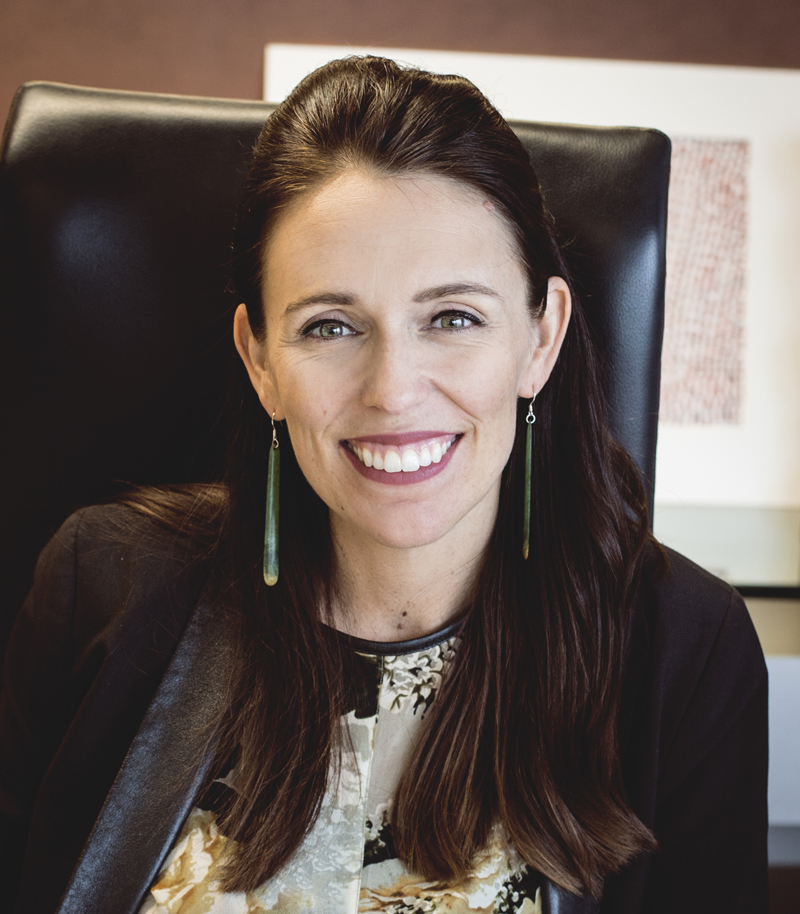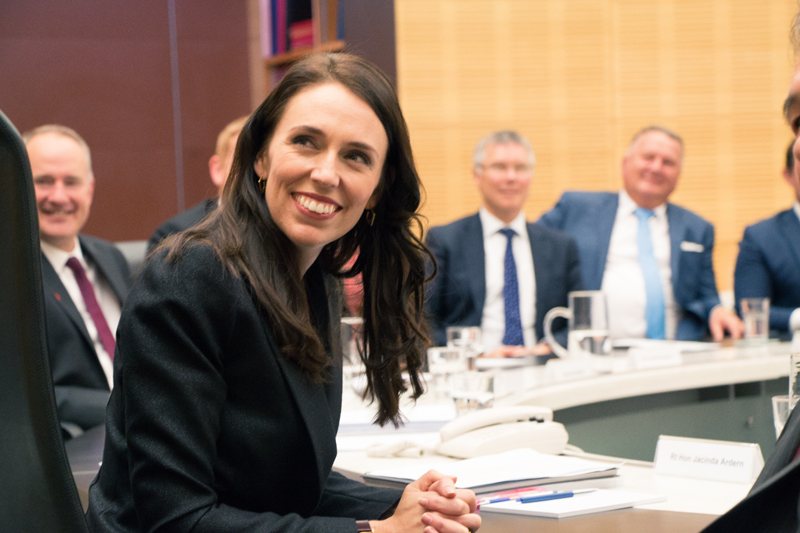In Conversation with Rt Hon Jacinda Ardern
Interviewed by Anton Carter

It’s a rare combination of jobs that has only occurred once before. So, what does this mean for the arts of New Zealand, and what does this mean for dance?
Prime Minister Jacinda Ardern was born in the city of Hamilton, New Zealand, and grew up rurally. She was the Shadow Minister for Culture and Heritage for Labour in 2014, and took the lead in this portfolio when she became the world’s youngest female head of government after leading the New Zealand Labour Party to electoral victory in October 2017.
Being the second youngest Prime Minister of New Zealand and only the third female Prime Minister, what does it take to be the leader of a country, how does someone get to this position, and will she be able to fulfil all the pre-election promises? But most importantly of all … can she dance?
How have the arts been part of your life growing up?
You could say my first interaction with the arts would have been learning piano, roughly around the age of four. I then (unsuccessfully!) went on to play the violin and ukulele. My time learning both was cut short – I was taught Suzuki style – and my inability to read music meant I was probably never going to go very far! From there I had a real interest in performing arts and joined our local little theatre and was always involved in our school plays. I think that was probably the part of the arts that I enjoyed the most as a young person.
What was your earliest memory of an arts experience that made an impact on you?
When I was sixteen my school put on The Crucible – that was a pretty big deal at that time, it was a significant production, and instead of it being held in the school hall, we upgraded to the local theatre. I remember one day we all boarded a bus to Auckland to see the Auckland Theatre Company’s staging of The Crucible and being absolutely blown away. I still remember parts of it to this day.
Do you have a dance background or experience of taking any form of dance classes growing up?
I feel like I should say no to this question! I did take dance classes – tap dancing, to be precise – but I was never particularly good. In fact, after a few classes, and realising I was never going to be Sammy Davis Jr., I promptly gave up. My sister, however, was a very good dancer, primarily of jazz ballet, and so my life felt like it had a pretty consistent period there where I would go to dance recitals to watch her.
What was the last New Zealand dance performance you saw?
The last dance performance I saw was a contemporary piece by New Zealand dancers last year. I took my sister-in-law along and was totally blown away.
This issue of the magazine has a focus on leadership and you’re obviously in the top leadership role in the country. Reflecting back, what were some experiences you had that taught you about leadership or have shaped you for this role?
I think we have these natural assumptions about what leadership requires – for example, that you have to be confident, brazen, and potentially full of ego. I think we should start challenging what leadership means to each of us. Leadership can mean creating an environment where you get the best from the people around you. It can mean leading with empathy and kindness. It can mean a whole set of characteristics that are intrinsic to you but you don’t see in everyday leadership. I hope we see more of that reflected in leadership roles across the country, as more people bring their own experience and character traits to leadership roles.
What was your advice recently to the Royal New Zealand Ballet (RNZB), on expectations of a government-funded organisation in their position?
I hold great hope for all of our arts organisations that they will only continue to excel. I have seen, however, some of the reports that have involved the RNZB. One area where I am particularly focused on is how we can create career pathways for New Zealand dancers. I’ve strongly encouraged the New Zealand School of Dance and the RNZB to work together to create a pipeline for dancers as part of our wider focus to ensure that we reinforce careers within the arts community.
Funding is critical to supporting and developing the arts. With regards to arts funding, especially for Creative New Zealand, how do you plan to bring stability and continuity?
I was very critical, in the past, of the fluctuating level of funding that Creative New Zealand is subject to and working actively now on ways to mitigate that fluctuation in the future.

A good chunk of arts funding comes from gambling in New Zealand, which seems wrong on so many levels. As the Minister for Culture and Heritage what will you do to change this?
I absolutely accept this is an issue within the arts sector and it’s something that I’ve certainly raised myself. There’s no denying though that a significant amount of money is redirected into the arts through lotteries, and that’s been the case for some time. The very first version of fundraising in this way was the old Arts Union. In an ideal world, of course, I think many of us would like to see a different source, but it is going to take time to create that environment. In the meantime, I am focused on creating stability for arts funding.
What practical ways will you ensure more community access and participation in the arts for all New Zealanders?
This is the very question I’ve been talking to a range of arts organisations about including Creative New Zealand and the Ministry for Culture and Heritage. Access is key – in my mind, we’ve succeeded when someone who lives in regional New Zealand, be they young or old, have the same access to interact with our creative sector as someone who maybe lives in an urban centre. At the moment I’m asking our officials to do more work on how we can measure and get a better sense of access across the country. A great starting point, though, is our education system.
To quote you: "When we mention the word wellbeing and we think about the arts; when we mention the word community and we think about the arts. When we mention togetherness, identity, culture, our heritage, and we think about the arts. And I crave the day when we stop explaining ourselves and people just know it." This is a powerful statement. What needs to be done to achieve this culture shift for our country?
I think this starts in leadership, so I acknowledge I need to keep doing my bit to create that culture shift.
In terms of building careers in the arts, the Labour Manifesto 2017 mentioned establishing ‘Creative Apprenticeships’ and re-establishing the PACE (Pathways to Arts and Culture Employment) scheme. Is there a plan for this to happen and when is it likely to happen?
This absolutely remains our policy; and is something that we’re actively working on at the moment.
As the Minister for Culture and Heritage, what would you like your legacy or lasting impacts to be?
Three things: as I’ve said for a long time, if we have an environment where we no longer question the value of the arts, if we have young people who consider a career in the arts as viable, and we have communities who can easily access the creative sector – then that would be a legacy I would be proud of.
Finally, could you share with us what are some of your favourite New Zealand dance, music, visual arts or literature?
I could provide a very long list… Instead I’ll just provide a couple of memories. I still remember the first time I saw a Colin McCahon exhibition and the way his paintings captured the various stages of his life. I also remember moving to New York and taking with me a copy of The Bone People by Keri Hulme – a book I had not read until that time and feeling utterly homesick every time I opened and read another page. As for music, that list would be long... But at the moment, I couldn’t be more proud of musicians like Lorde if I tried.
Download the article: In Conversation with Rt Hon Jacinda Ardern
